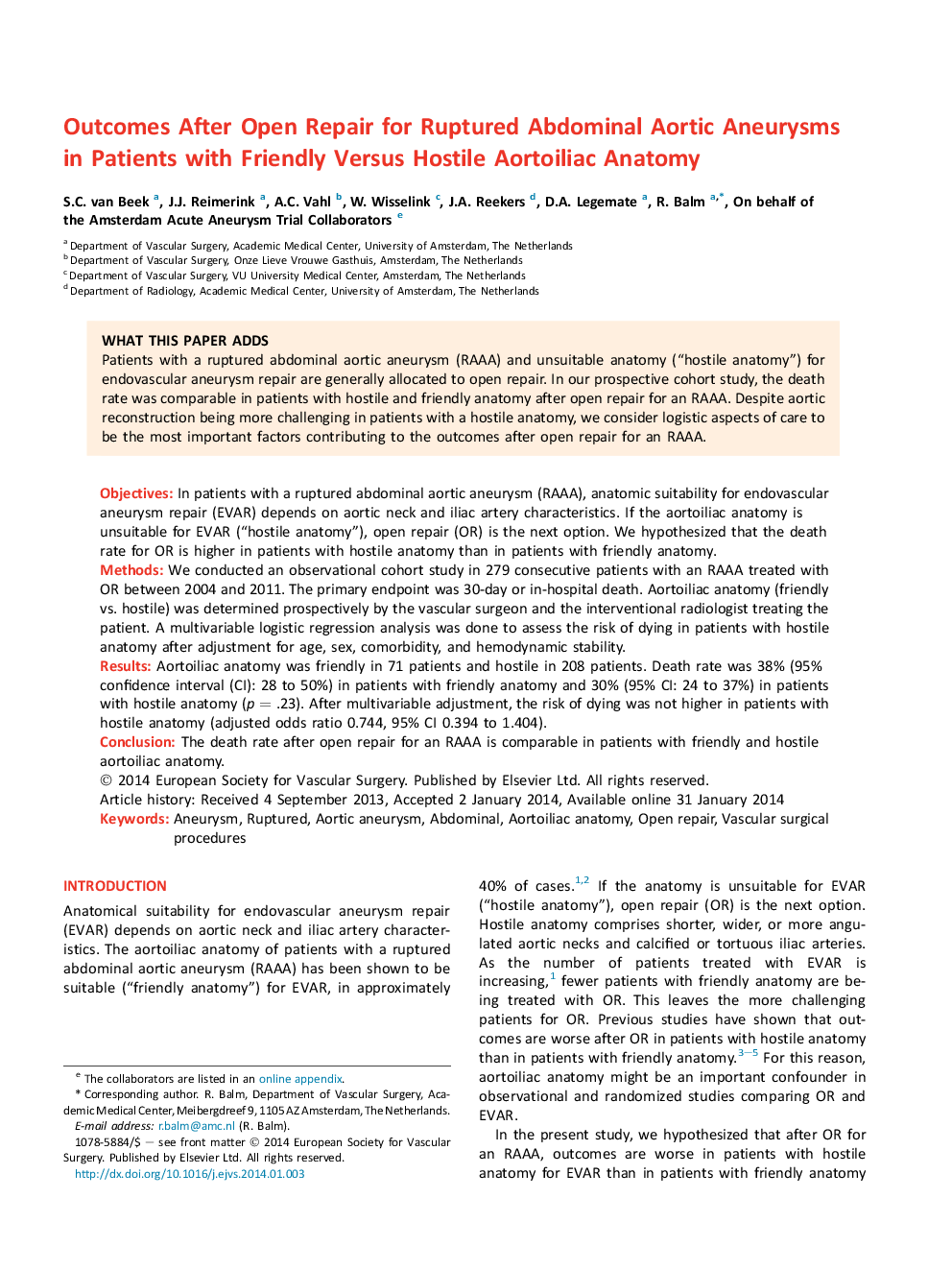| Article ID | Journal | Published Year | Pages | File Type |
|---|---|---|---|---|
| 5958413 | European Journal of Vascular and Endovascular Surgery | 2014 | 8 Pages |
ObjectivesIn patients with a ruptured abdominal aortic aneurysm (RAAA), anatomic suitability for endovascular aneurysm repair (EVAR) depends on aortic neck and iliac artery characteristics. If the aortoiliac anatomy is unsuitable for EVAR (“hostile anatomy”), open repair (OR) is the next option. We hypothesized that the death rate for OR is higher in patients with hostile anatomy than in patients with friendly anatomy.MethodsWe conducted an observational cohort study in 279 consecutive patients with an RAAA treated with OR between 2004 and 2011. The primary endpoint was 30-day or in-hospital death. Aortoiliac anatomy (friendly vs. hostile) was determined prospectively by the vascular surgeon and the interventional radiologist treating the patient. A multivariable logistic regression analysis was done to assess the risk of dying in patients with hostile anatomy after adjustment for age, sex, comorbidity, and hemodynamic stability.ResultsAortoiliac anatomy was friendly in 71 patients and hostile in 208 patients. Death rate was 38% (95% confidence interval (CI): 28 to 50%) in patients with friendly anatomy and 30% (95% CI: 24 to 37%) in patients with hostile anatomy (p = .23). After multivariable adjustment, the risk of dying was not higher in patients with hostile anatomy (adjusted odds ratio 0.744, 95% CI 0.394 to 1.404).ConclusionThe death rate after open repair for an RAAA is comparable in patients with friendly and hostile aortoiliac anatomy.
